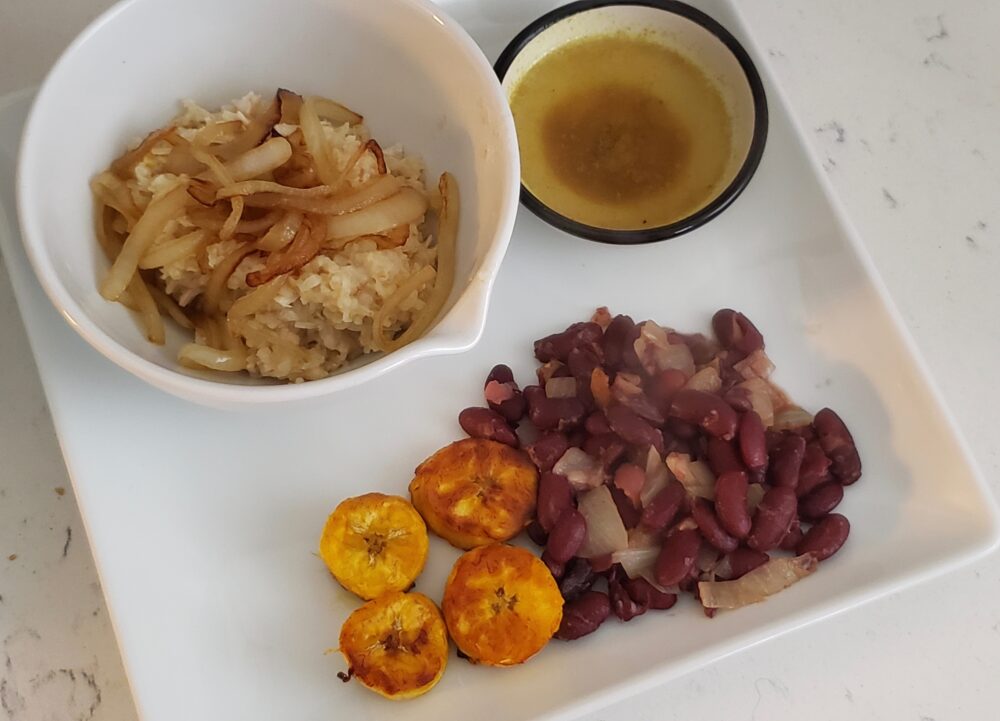After last week’s success (mostly thanks to Sam), we’re now really cooking (pun intended). And, in fact, this is the week that Sam really learned about a brand new dish and has since fully incorporated it into his diet. He now often eats couscous for lunch – without all the meat and spices, of course. He still likes things very plain. But I have to say this third episode has changed his life. And mine too.
This might be the first dish we made that is pretty widely known. Let us know in the comments how you feel about couscous.
THE CUISINE
I’ve been fascinated with Algeria ever since I saw the classic old movie Algiers. Sure, it’s an old 1930’s jewelry heist movie, but it presented Algeria in such a fascinating and exotic way. I’m sure it’s terribly out of date and culturally tone deaf. But I’ll always remember the film.
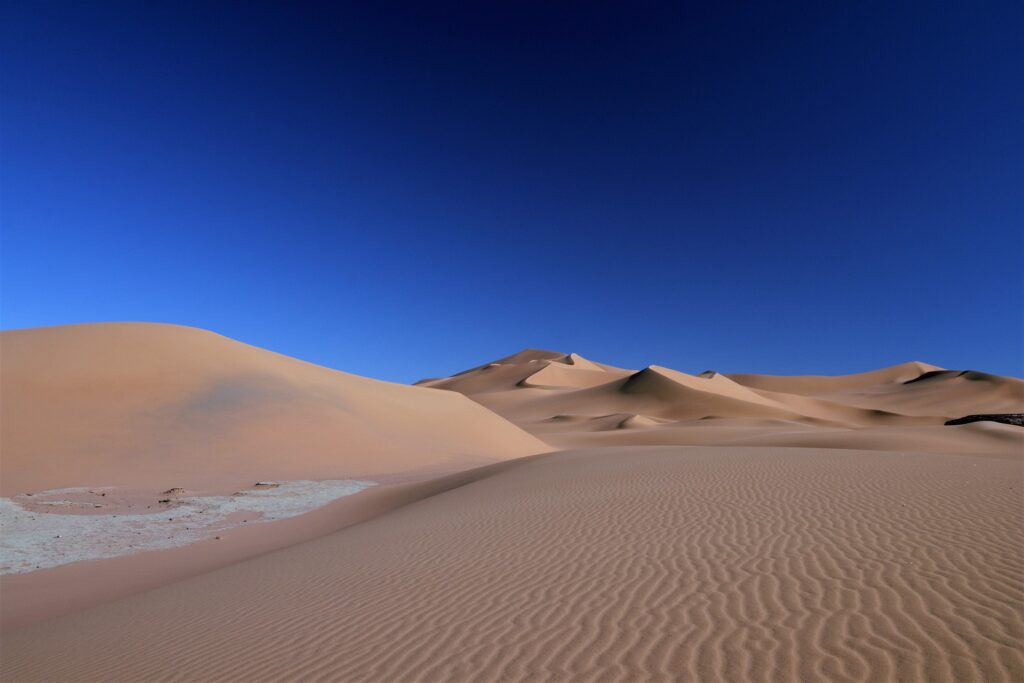
Algeria is a large country in North Africa but 80% of its land is covered by the Sahara Desert. However, the northern part of the country (along the Mediterranean) is fertile and heavily influences its diet. Plenty of vegetables, herbs, and olives enter into the equation. As does grain, especially breads and the dish everybody always talks about: couscous.
The food culture is also inspired and influenced by the people and cultures who have been on this land over the centuries, most notably the Berbers, the French, the Arabs, and the Ottomans.
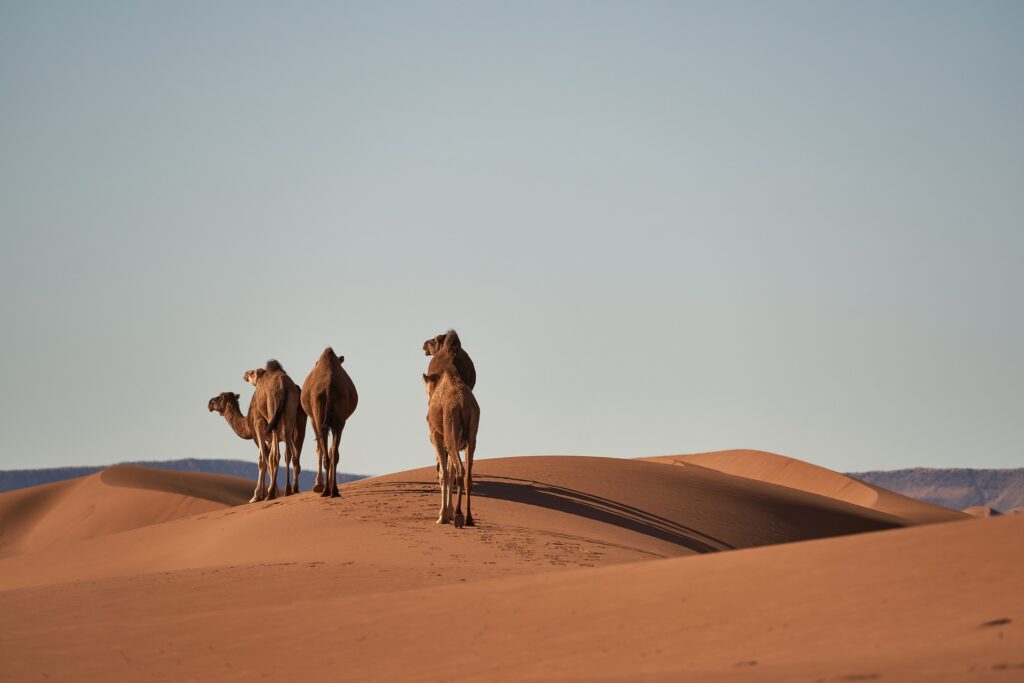
Meat is featured in just about every Algerian dish you’ll try – it’s often rare to find couscous without some sort of meat. But the one meat you won’t see, of course, is pork. Algeria is a Muslim nation and so of course pork is not allowed. That allows more space in the kitchen for lamb and chicken. And of course, merguez sausage is one of their specialities, which is a spiced lamb sausage. It’s also not unusual in the desert to sometimes find camel on the menu!
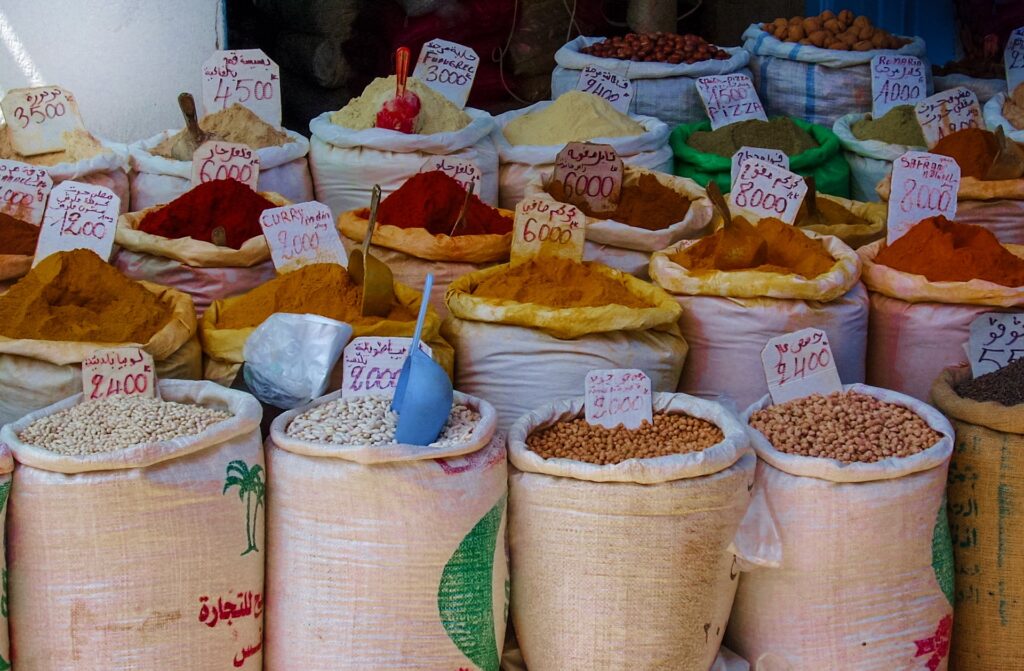
And let’s not forget spices. Algerians might use a bit more restrained spices than neighboring Morocco or Tunisia, but they certainly rely on things like coriander, cinnamon, and ras el hanout. Algerian cuisine is usually less spicy but just as flavorful and incredibly hearty. Anybody hungry yet?
ALGERIAN FOOD IN NEW YORK
Sadly I can think of several Moroccan restaurants in the city, but only one distinctly Algerian restaurant. And even sadder is that I have never had a chance to visit it.
Over the years there have been others that have come and gone. But the only one that really seemed to hold on is Nomad in the East Village.
I should also mention there is another restaurant in Astoria named Merguez & Frites (that sounds very tempting) that is also Algerian owned but they seem to advertise as North African. But no reason to not head out to Queens to give it try.
THE VIDEO
This might be our best collaboration yet. Sam and I discuss some of the important things in life like why an onion makes you cry. We make a little “couscous” music and talk about discuss life on a desert!
Most importantly, Sam really likes the couscous. He might not have eaten any of the meat or the vegetables but the main component of the dish is a success!
THE DISH
Just to illustrate how important couscous is to Algerians, they often call it Taam (or طعام), which translates to life. And really, when it’s topped with tons of meats, vegetables, and spices, what more does anybody really need?
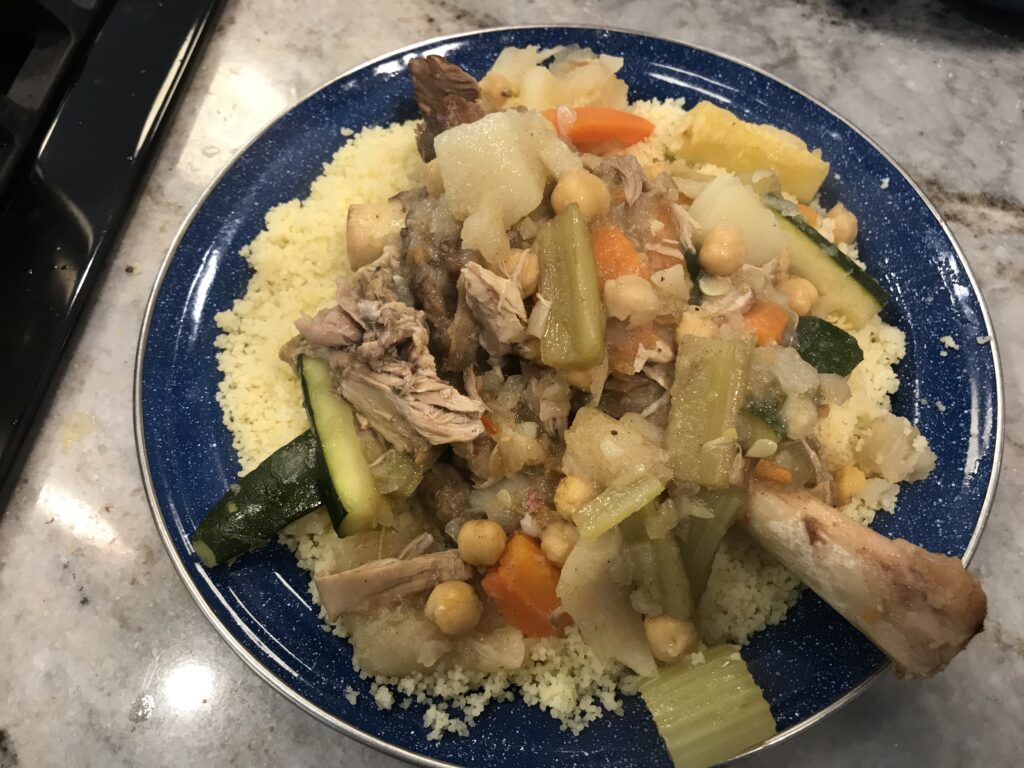
Now, most Americans think couscous and they think about either the large Israeli style pearls of pasta or the North African tiny balls of semolina. But in Algeria (and its neighboring countries Libya, Morocco and Tunisia), couscous also refers to the actual dish of stew and, yes, couscous. It’s both an ingredient and the final dish.
Variations abound – especially from country to country and region to region. In fact, while this is the National Dish of Algeria and they claim it as their own, the same is true of the other aforementioned countries. So don’t be surprised when we get to the other North African countries, we do different variations on the same dish.
But I really dug through the ethers of the recipe internet looking for a couscous recipe that was distinctly Algerian. I read that the Algerians tend to like the dish a bit heartier and a restrained level of spices. 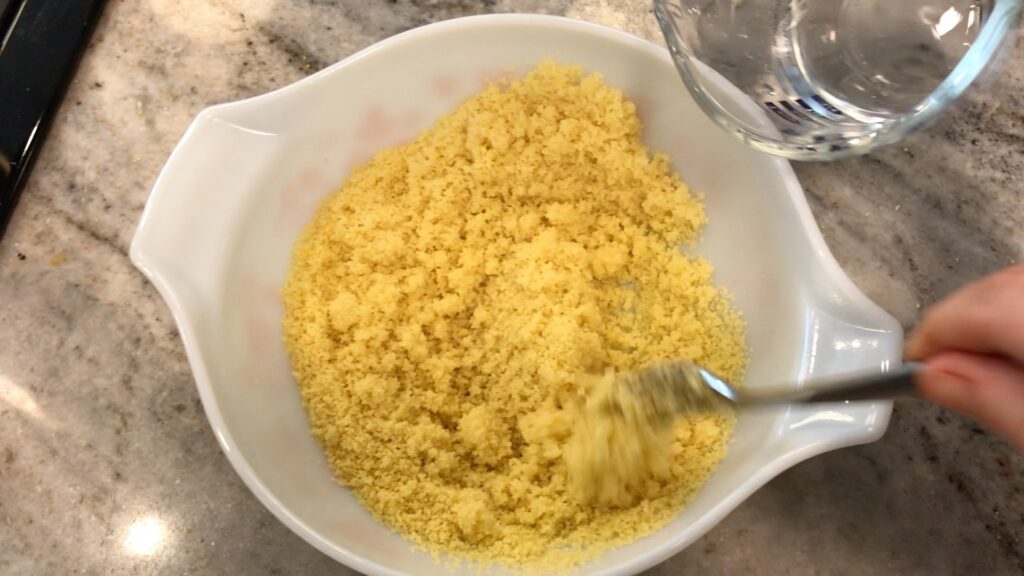
Regardless of where it is from, it should be homemade and steamed at least twice with butter and oil being incorporated between steams. It is not a quick process. Plus it should be cooked in a couscoussier. That’s seriously a thing. I thought about investing in one and then realized this is just country three and I can’t start buying an expensive cooking instrument for every meal. As tempting as that is.
SPECIAL INGREDIENTS
So starting this week, I’d like to focus on some of the special ingredients I had to hunt down in order to make the dish as close to authentic as possible. This week there were three that you might not so easily find at your local grocery store.
Cardoons
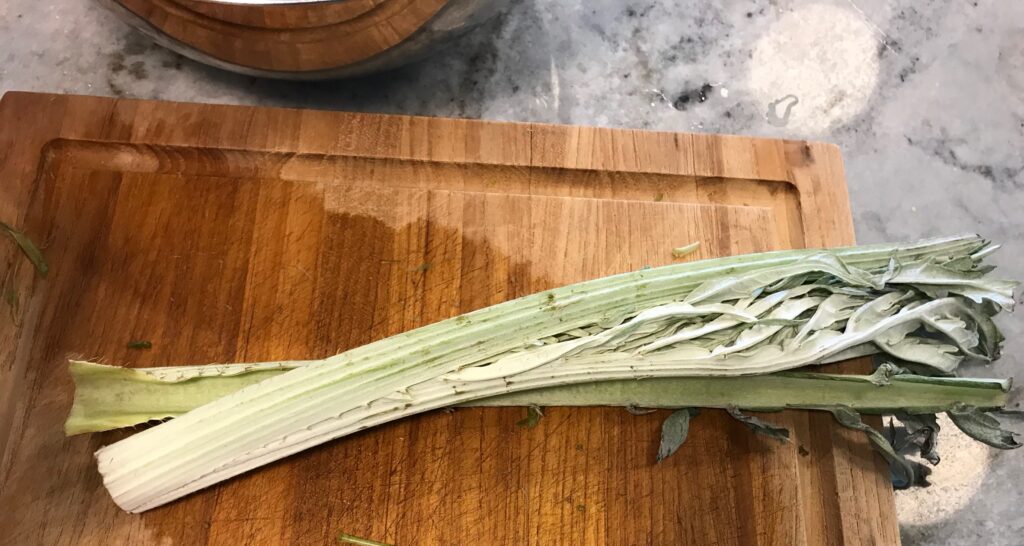
Amazingly, I just stumbled upon cardoons. They showed up in recipes but I never thought I’d locate them. I’ve had them before at restaurants but never cooked with them and rarely see them at the farmer’s market. They actually had them at my butcher shop – which is a very special, hipster butcher shop. The kind that sometimes sells cardoons.
They grow prevalently in the Mediterranean (including Algeria) and so if nothing else, I felt this gave the stew an air of authenticity.
Cardoons look dangerously like celery but they are very fibrous and have a series of thorn like needles on the edges. Gloves are highly recommended when handling them. Even when picking them up at the store. Be careful.

It was quite an ordeal to trim them down and make them safe. You have to carefully cut off the thorns and then use a vegetable peeler to get all the fibers off from the center of the stalk. And then if you don’t use it right away, it’s similar to a potato where it will discolor if not soaked in acidic water. For some, it might not be worth the effort.
Once you realize they are in the artichoke family, it actually makes sense because both are a pain to deal with. And they make you think about, “Who was the first person who discovered there was a part of this painful plant that is edible??”
Ras el Hanout
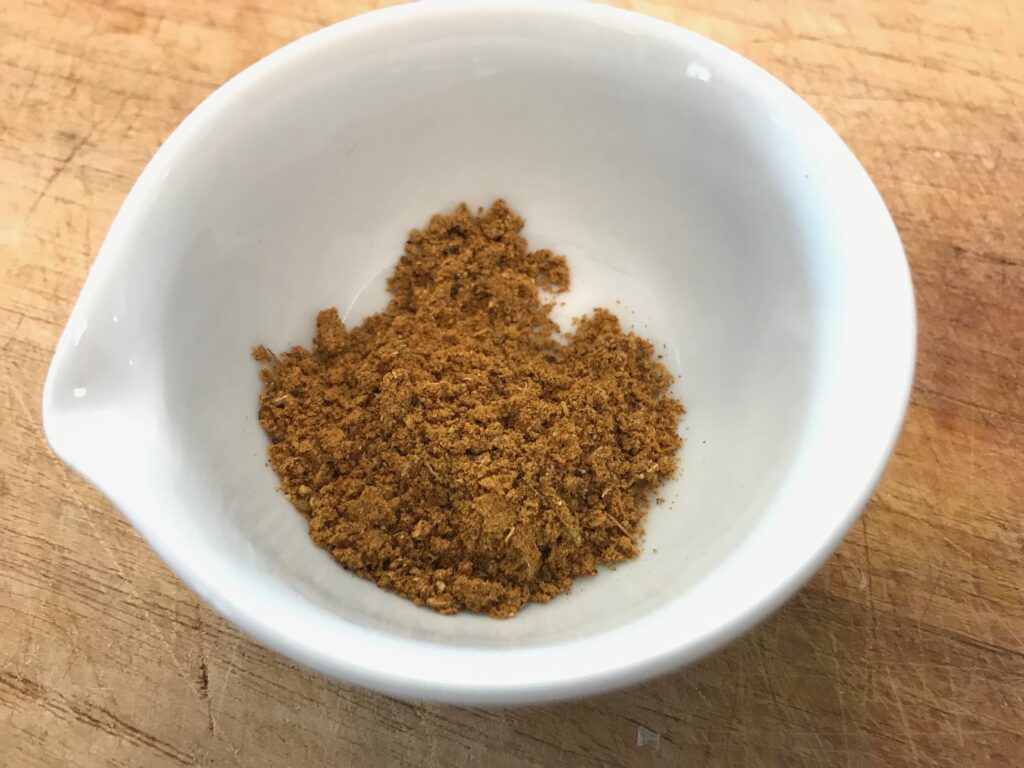
Also known as راس الحانوت in Arabic, ras el hanout translates to “head of the shop” meaning the best the spice blender has to offer that day. This is another ingredient you’ll find all over North Africa and is very important.
That being said, there is no agreed upon recipe. We made our own from what we had and sounded like it should go in, but everybody has their own. And in fact, you can most likely buy a pre-mixed blend in your local store labelled ras el hanout and it will be easier and probably just as good.
The list of possible spices is huge. Usually cardamom, cumin, cinnamon, turmeric, and peppers are included, but I’ve seen everything from fenugreek to lavender to something intriguingly called orris root.
Harissa

While its totally different in terms of flavor and form, harissa is similar to ras el hanout in that it is popular all over the region and everybody’s recipe is different.
Essentially, it’s a paste blended with oil, hot peppers, and spices. It’s the most popular condiment in this part of the world and varies in heat level and flavor. Think of it as a chunky, spicy ketchup. But so much better!
THE RECIPE
I was searching everywhere for a couscous recipe that did not have the word Moroccan in it. Then I came across a recipe from Halal Home Cooking which seemed to fit the bill.
Like all of my recipes, I didn’t follow it exactly but used this template as inspiration and added meats I could find at the local butcher and vegetables that were in season at the farmer’s market.
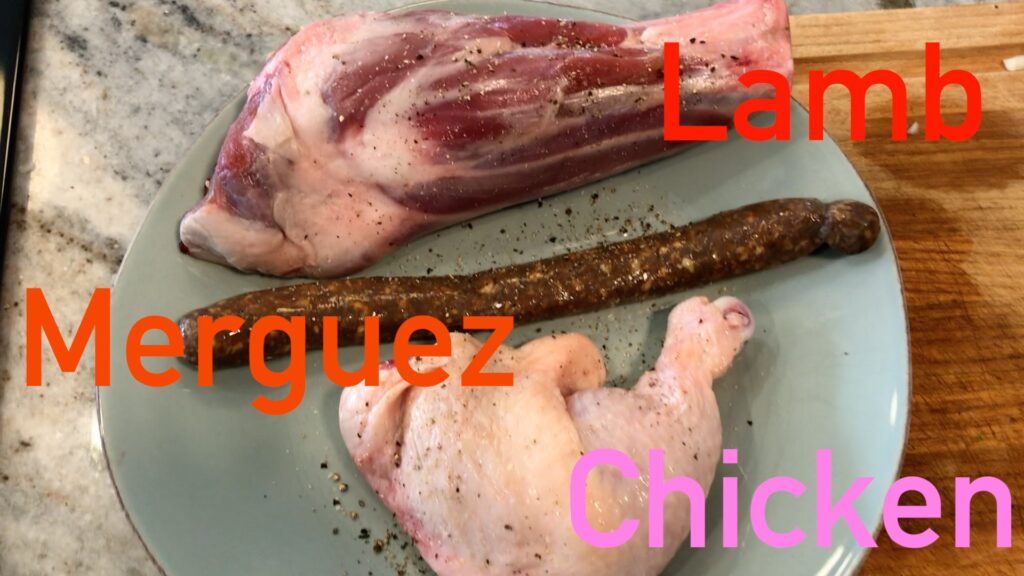
We ended up with a bounty of meat. Not sure it’s so authentic to make a couscous with all three of these, but we were doing it up. We had chicken, lamb shank, and merguez sausage. Merguez is a spiced lamb sausage that gives the dish a true North African flavor.
I looked and looked for homemade couscous. I thought about even doing it myself, but after remembering I have a three year old who is not always as patient as he appears in the video, I settled on a brand I thought would come the closest. The directions do say to quickly steam in water for 5 minutes, but I ignored those and treated this store bought couscous the way the Algerians treat the real thing.
Couscous from Algeria
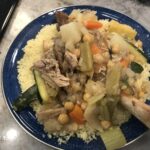
I tried to find a recipe that was a bit distinct from the similar couscous dishes in Morcco and Tunisia. This one features a bounty of meat and vegetables, but is a bit restrained on the spices and body.
Meat
- 1 lamb shank (or other pieces of lamb)
- 1 quarter chicken (or other pieces of chicken)
- 1 merguez sausage
- 1 large yellow onion (chopped)
- 2 tbspn olive oil (extra virgin)
Vegetables and Beans
- 1 cardoon bunch (if available) (trimmed and cut into chunks)
- 4 carrots (peeled and cut into chunks)
- 2 celery stalks (cut into chunks)
- 1 turnip (cut into chunks)
- 1 zucchini (cut into chunks)
- 1 potato (peeled and cut into chunks)
- 1/2 cup chickpeas
Spices
- 2 tspn ras el hanout
- 1.5 tspn cumin (ground)
- 1.5 tspn coriander (ground)
- 1 tspn cinnamon (ground)
- 1/2 tspn black pepper
- 1 tbspn harissa
Couscous
- 2 cups medium grain couscous (homemade if possible)
- 1 tbspn butter
- 1 tbspn olive oil (extra virgin)
Meat and Stew
-
Generously season meat with salt and pepper.
-
Heat olive oil in large pot or couscoussier over medium high heat. Brown meat on all sides for about 8 minutes. Remove.
-
Add chopped onions and cook until browned – about 5-7 minutes.
-
Add meat back to the pot. And then put in ras el hanout, cinnamon, cumin, coriander, black pepper, sea salt, and harissa. Cook for a few minutes until fragrant.
-
Add 3-4 cups of water to come just above the top of meat. Bring to a boil.
-
Lower the heat to a simmer and loosely cover the pot leaving it slightly ajar. Let simmer for 40 minutes.
-
After 40 minutes, add in celery, carrots, turnips, potatoes, and cardoons. Slightly cover again and cook for another 20 minutes.
-
After 20 minutes, add in zucchini and chickpeas. Cook for another 5-10 minutes.
Couscous
-
Slowly stir in 1/2 tablespoon of olive oil with a fork or your fingers making sure the grains are evenly coated. Slowly stir in 1/4 cup of water in the same manner being careful not to add too much.
-
If you have a steaming basket that fits, you can place the couscous over the stew when it has finished cooking. Otherwise, ladle out some of the water from the stew into another pot and steam couscous over that for 10 minutes.
-
Remove couscous and another 1/4 cup of water to the couscous slowly with a fork breaking up the grains. Return to the steamer and steam for another 10 minutes.
Plate
-
Place couscous on a plate spreading an empty section in the middle for the stew. Add meat and then top with vegetables and sauce. Chow down!
HOW I SCREWED IT UP
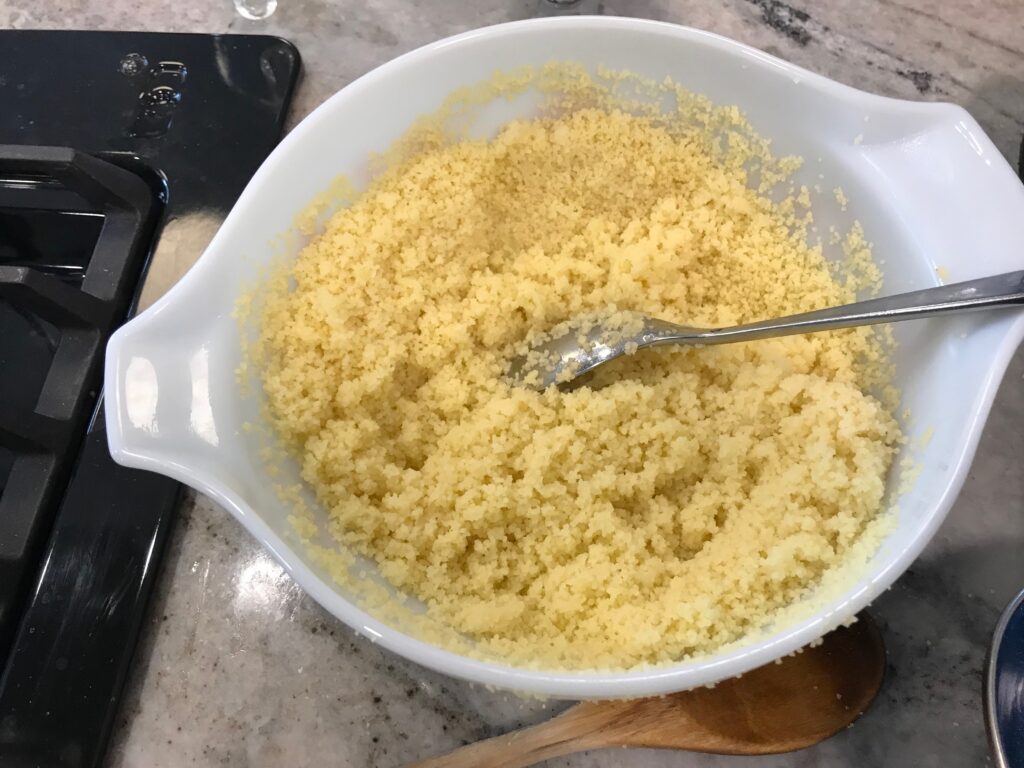
Thankfully, the best part of the dish was the couscous itself. Adding that extra bit of love and attention might not have been necessary, but it certainly didn’t hurt. It came out really well. No wonder Sam fell in love with it.
The stew wasn’t nearly as impressive. It was definitely hearty but lingered on the bland side. Which surprised me. I think my big mistake was adding too much water. You’re supposed to just cover the meat but I probably could have had a lighter hand. The meat came out pretty well, but it too was bland.
I also should have upped the spices and harissa (I have since adjusted the recipe so the proper portions are reflected above).
SAM’S REACTION

As I mentioned at the top of this post, Sam has fallen in love with couscous. He has always loved both pasta and rice and since this is sort of somewhere between the two, this is now his new favorite carb.
Sam also loves sausages, but he met his match with merguez. He was eager to try it (even though I warned him it would be spicy), but after putting it in his mouth, his eyes quickly widened. For a master eater like myself, it wasn’t too spicy, but I realize it was intense for this little guy.
The important thing is he liked the actual couscous which is the name of the dish, thank you very much!
NEXT WEEK
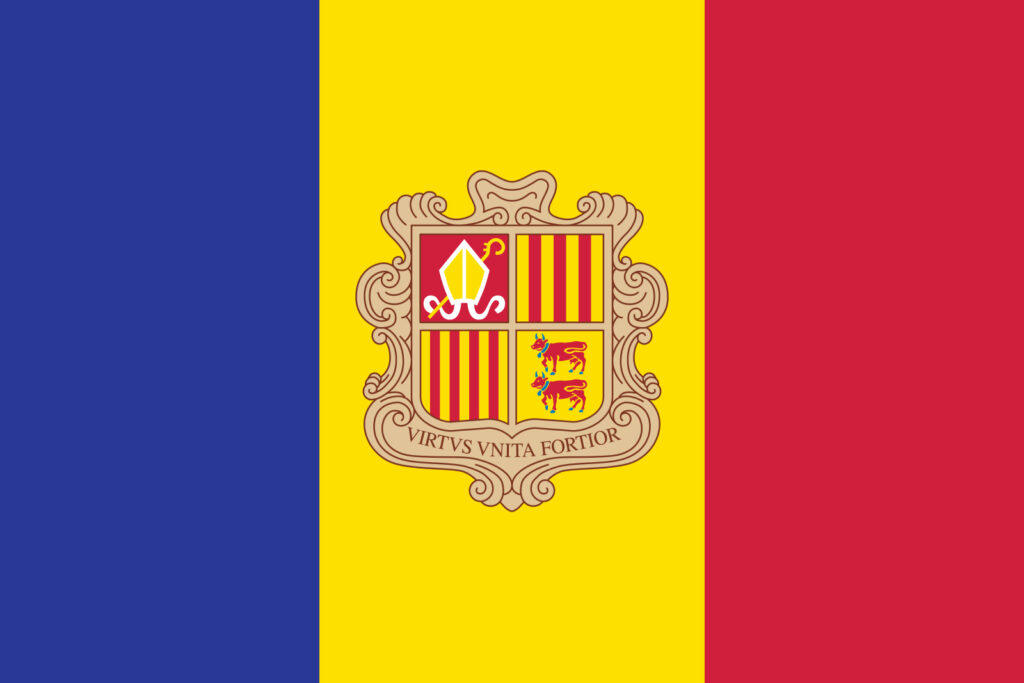
Next week, we’re heading to the first country I had never heard of. I’m totally embarrassed but I had no idea there was a country named Andorra in the middle of Western Europe. And I thought I knew my geography of Western Europe.
We’ll be heading into the Pyrenees and making a very hearty winter soup. Have you ever heard of Andorra or had its cuisine? Let us know in the comments.



